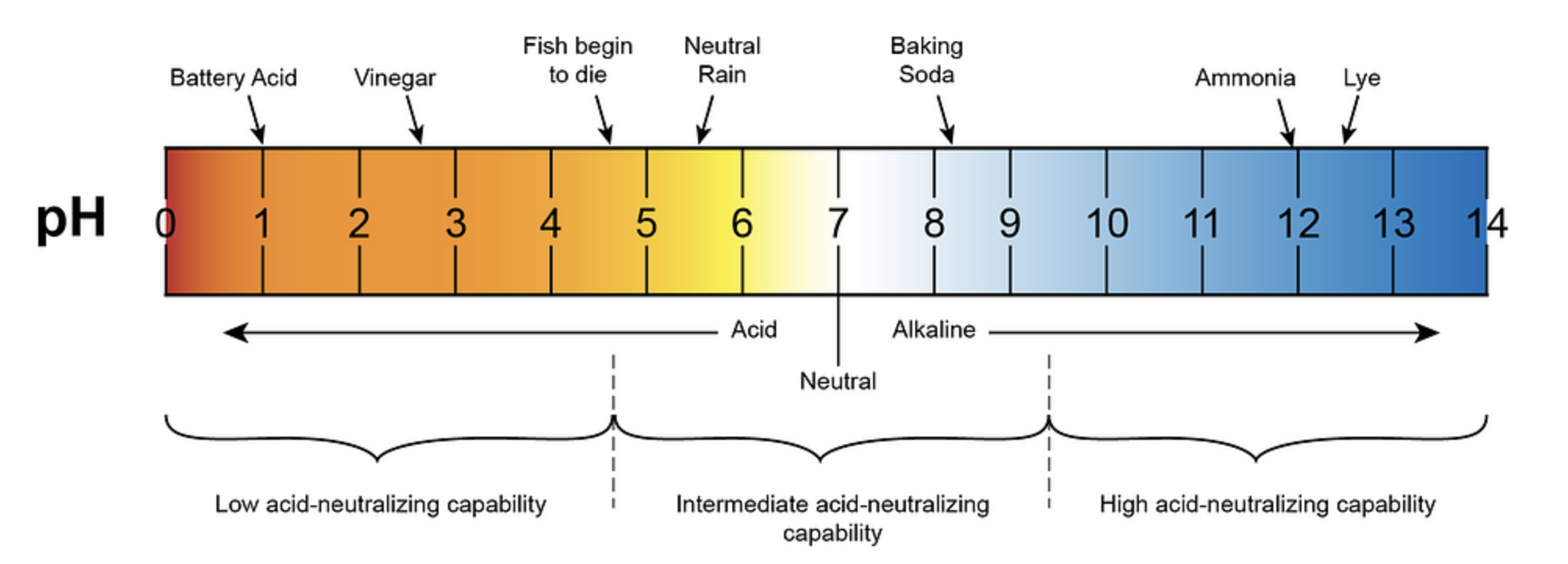The pH value of tap water in Charlotte, USA, generally ranges from 8.0 to 9.2, making it slightly basic due to the application of lime in the treatment process. This alkalinity and pH boost provide optimal corrosion control in the water distribution system, but it can also affect the taste of the water.
Understanding the pH of Charlotte’s Tap Water
The pH scale measures the acidity or basicity of a solution, with a range from 0 to 14. A pH value of 7 is considered neutral, while values below 7 are acidic, and values above 7 are basic or alkaline. The pH of tap water in Charlotte, USA, falls on the basic side of the scale, typically ranging from 8.0 to 9.2.
This slightly basic pH is a result of the water treatment process used by Charlotte Water, the city’s public water utility. The addition of lime, a calcium-based compound, during the treatment process helps to raise the pH and increase the alkalinity of the water. This is done to provide optimal corrosion control in the water distribution system, preventing the leaching of metals from pipes and plumbing fixtures.
Impacts of High pH on Tap Water
While the slightly basic pH of Charlotte’s tap water is beneficial for corrosion control, it can also have some impacts on the taste and quality of the water. Higher pH values, typically above 8.5, can result in a bitter or metallic taste, which some consumers may find unpalatable.
Additionally, the high pH can affect the solubility of certain minerals and compounds in the water, potentially leading to the formation of scale or deposits in plumbing fixtures and appliances. This can reduce the efficiency of water heaters, dishwashers, and other household appliances, and may require more frequent cleaning or maintenance.
Contaminants in Charlotte’s Tap Water
In addition to the pH considerations, Charlotte’s tap water may also contain various contaminants, some of which can have potential health effects. According to the Environmental Working Group’s (EWG) Tap Water Database, the following contaminants have been detected in Charlotte’s water supply:
| Contaminant | Potential Health Effects |
|---|---|
| Perfluoropentane sulfonic acid (PFPeS) | Potential cancer risk, developmental and reproductive effects |
| Perfluorotridecanoic acid (PFTrDA) | Potential cancer risk, developmental and reproductive effects |
| Perfluoroundecanoic acid (PFUnA) | Potential cancer risk, developmental and reproductive effects |
| Permethrin | Potential cancer risk, neurological effects |
| Picloram | Potential cancer risk, liver and kidney effects |
| Polychlorinated biphenyls (PCBs) | Potential cancer risk, developmental and reproductive effects |
| Profenofos | Potential cancer risk, neurological effects |
| Radium, combined (-226 & -228) | Potential cancer risk |
| Selenium | Potential reproductive and developmental effects |
| Simazine | Potential cancer risk, liver and kidney effects |
| Tetrachloroethylene (perchloroethylene) | Potential cancer risk, neurological and reproductive effects |
| Trichloroethylene | Potential cancer risk, neurological and reproductive effects |
| Vinyl chloride | Potential cancer risk |
It’s important to note that the presence of these contaminants does not necessarily mean that the water is unsafe for consumption, as the levels detected may still be within the health guidelines set by regulatory agencies. However, the potential health effects associated with these contaminants highlight the importance of regular water quality testing and the use of appropriate filtration systems to ensure the safety and quality of Charlotte’s tap water.
Balancing the pH of Tap Water
To balance the pH of tap water in Charlotte, USA, home remedies can be employed. One such method is adding lemon juice or vinegar to lower the pH value, while baking soda can be used to raise it. However, it is crucial to monitor the pH value regularly to ensure it remains within the optimal range.
When dealing with contaminants in Charlotte’s tap water, various filtration methods can be used. Activated carbon filters and reverse osmosis systems are effective in reducing contaminant levels, particularly for Bromodichloromethane, Bromoform, Chloroform, Chromium (hexavalent), Dibromoacetic acid, and Trichloroacetic acid. Regular testing of water quality and investing in appropriate filtration systems can significantly improve the safety and quality of tap water in Charlotte, USA.
Conclusion
The pH of tap water in Charlotte, USA, is slightly basic, ranging from 8.0 to 9.2, due to the water treatment process. While this pH level provides optimal corrosion control, it can also affect the taste of the water and lead to the formation of scale or deposits in plumbing fixtures and appliances.
In addition to the pH considerations, Charlotte’s tap water may also contain various contaminants, some of which can have potential health effects. Homeowners can use home remedies to balance the pH of their tap water, and investing in appropriate filtration systems can help reduce the levels of these contaminants.
By understanding the pH and contaminant profile of Charlotte’s tap water, residents can make informed decisions about their water usage and take steps to ensure the safety and quality of their drinking water.

